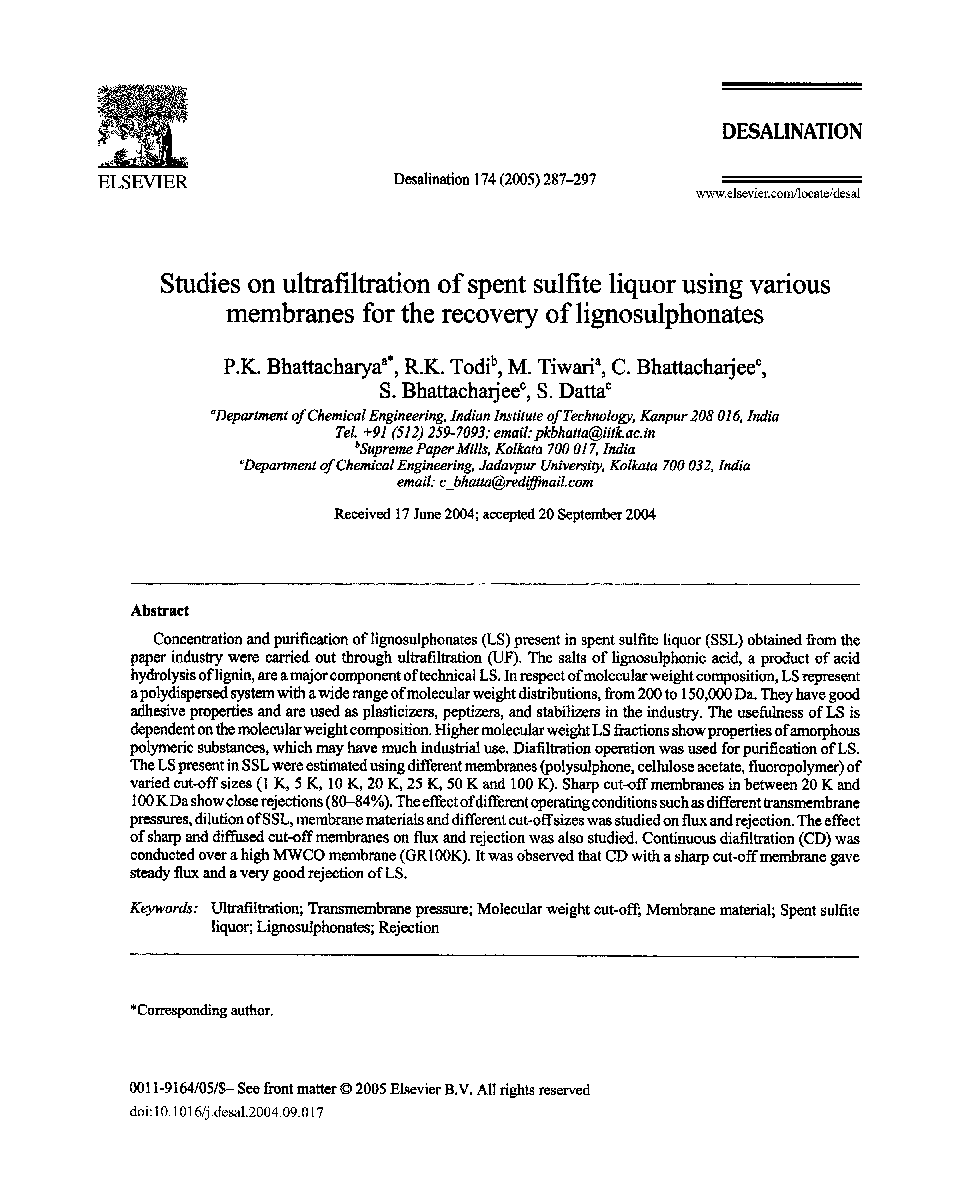| Article ID | Journal | Published Year | Pages | File Type |
|---|---|---|---|---|
| 10386375 | Desalination | 2005 | 11 Pages |
Abstract
Concentration and purification of lignosulphonates (LS) present in spent sulfite liquor (SSL) obtained from the paper industry were carried out through ultrafiltration (UF). The salts of lignosulphonic acid, a product of acid hydrolysis of lignin, are a major component of technical LS. In respect of molecular weight composition, LS represent a polydispersed system with a wide range of molecular weight distributions, from 200 to 150,000 Da. They have good adhesive properties and are used as plasticizers, peptizers, and stabilizers in the industry. The usefulness of LS is dependent on the molecular weight composition. Higher molecular weight LS fractions show properties of amorphous polymeric substances, which may have much industrial use. Diafiltration operation was used for purification of LS. The LS present in SSL were estimated using different membranes (polysulphone, cellulose acetate, fluoropolymer) of varied cut-off sizes (1 K, 5 K, 10 K, 20 K, 25 K, 50 K and 100 K). Sharp cut-off membranes in between 20 K and 100 K Da show close rejections (80-84%). The effect of different operating conditions such as different transmembrane pressures, dilution of SSL, membrane materials and different cut-off sizes was studied on flux and rejection. The effect of sharp and diffused cut-off membranes on flux and rejection was also studied. Continuous diafiltration (CD) was conducted over a high MWCO membrane (GR100K). It was observed that CD with a sharp cut-off membrane gave steady flux and a very good rejection of LS.
Keywords
Related Topics
Physical Sciences and Engineering
Chemical Engineering
Filtration and Separation
Authors
P.K. Bhattacharya, R.K. Todi, M. Tiwari, C. Bhattacharjee, S. Bhattacharjee, S. Datta,
